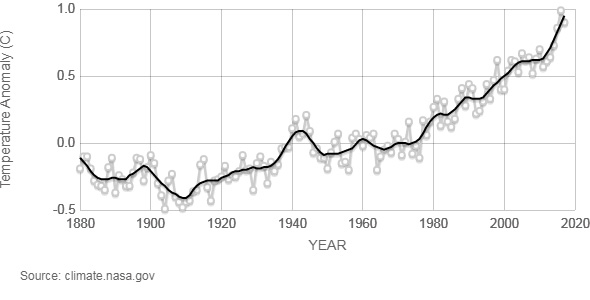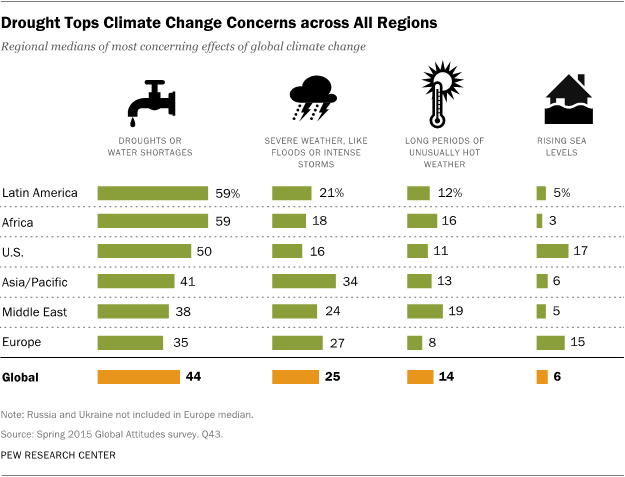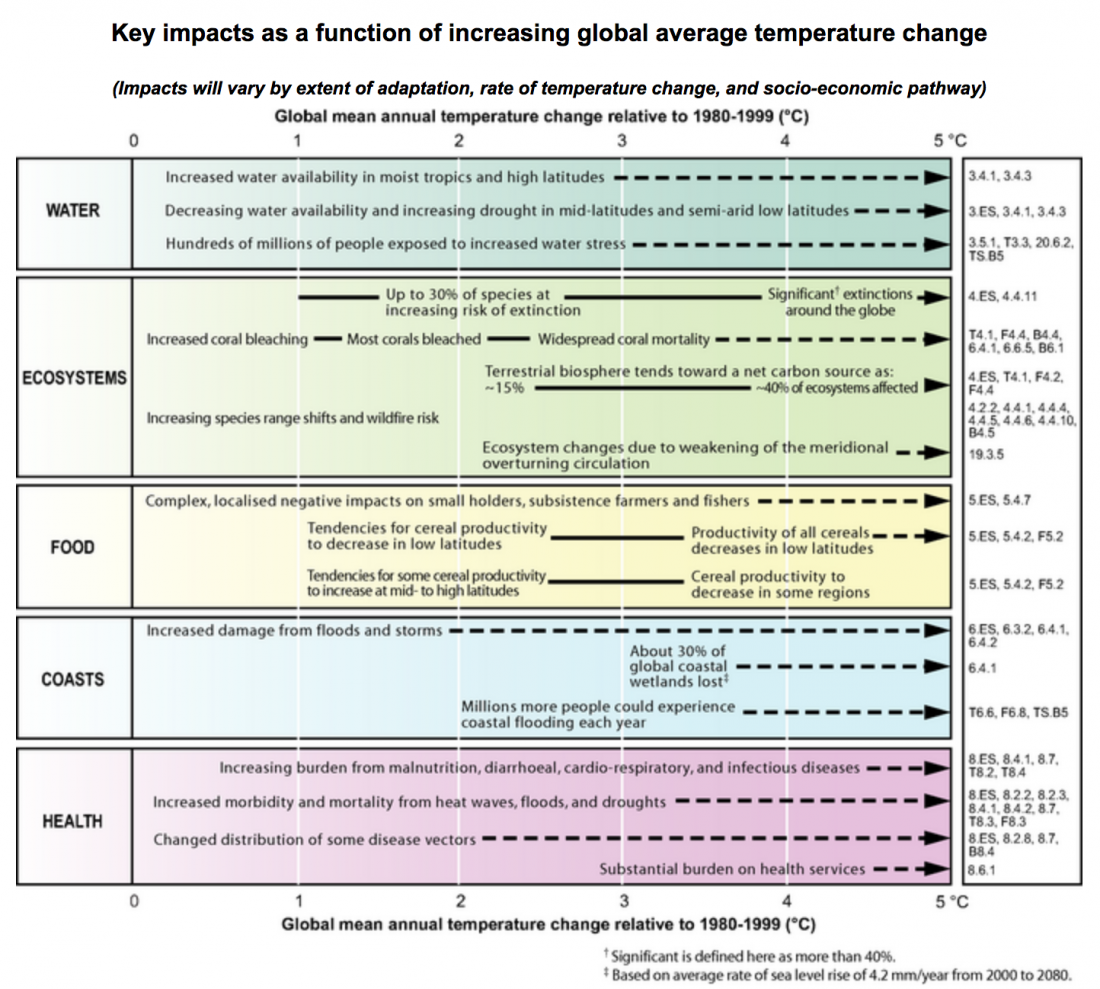Happy belated Earth Day and Happy 6th Birthday to Climate Change Fork!
I have repeatedly mentioned that global climate change is driven mainly by our interruption of the energy cycle. Specifically, we use fossil fuels as our main energy source as we aim to increase standards of living throughout the world. However, the biggest immediate impact of climate change that we are feeling relates directly to the subsequent disturbance of the water cycle. Not only does that change already have major effects on our lives, it is projected to accelerate in a business as usual scenario (as the global population continues to grow and we keep striving for higher standards of living).
Projections are abstract and they may be wrong (overestimating or underestimating the effects of present trends). My last series of blogs (starting mid-February) tried to analyze present trends in energy use, carbon emission, population growth, and the average standard of living in the world’s most populated countries as well as a few of the most developed ones. I will continue to look at the same groups of countries in the coming series of blogs with an emphasis on water use. I’m starting with the projections from the IPCC’s 2007 Fourth Assessment Report (AR4).
Figure 1 summarizes the IPCC’s assessments of five categories that are all directly or indirectly connected to water use.
Figure 2 shows an estimate of where we stand now in terms of temperature rise. It displays the annual temperature from 1880, as compiled by NASA, overlaid by a smoothed version using a statistical method known as Lowess Smoothing. Using the timetable from Figure 1, we experienced an average rise of 0.75oC from 1980 to 1999.
 Figure –Global temperature change 1880-2020
Figure –Global temperature change 1880-2020
Figure 3 ranks global concerns about various consequences of climate change. Water impact, specifically with regard to droughts and water shortages, is by far the most pressing issue in most people’s minds.
 Figure 3 – Global Concerns about Climate Change
Figure 3 – Global Concerns about Climate Change
I have discussed the connections between climate change and global water vulnerabilities in the past (see for example August 27, 2013 – water stress; November 12, 2013 – water desalination; November 19, 2013 – feedback on desalination; March 4, 2014 – Israel and water management).
This series will focus on similar topics including water stress, desertification, floods, the state of the ocean, and the role of water in the amplification of the impact of carbon that of burning fossil fuels. I am continuing my focus on the 12 most populated countries so as to develop a global perspective. This is not about far-future projections but rather present practices, emphasizing steps that are being taken right now to try to make the future a better one.



Climate change does interrupt the water cycle—it causes more precipitation in some areas and severe droughts i9n other areas. A few years ago, there was a tremendous drought in the west and mid-west, and crops dried up in the fields! It all has to do with wind pattern changes and resultant El Ninos and La Ninas.
This is why the U.S. and other countries should start building water desalinization plants, NOW—to be able to remove salt from ocean water in cases of future droughts. In severe droughts, residents of some states and countries may not have water to drink! By building the desalinization plants now (we don’t have to actually use them yet), we can be prepared for severe water shortages in the future! Let’s build them now and HOPE we’ll never have to actually use them!